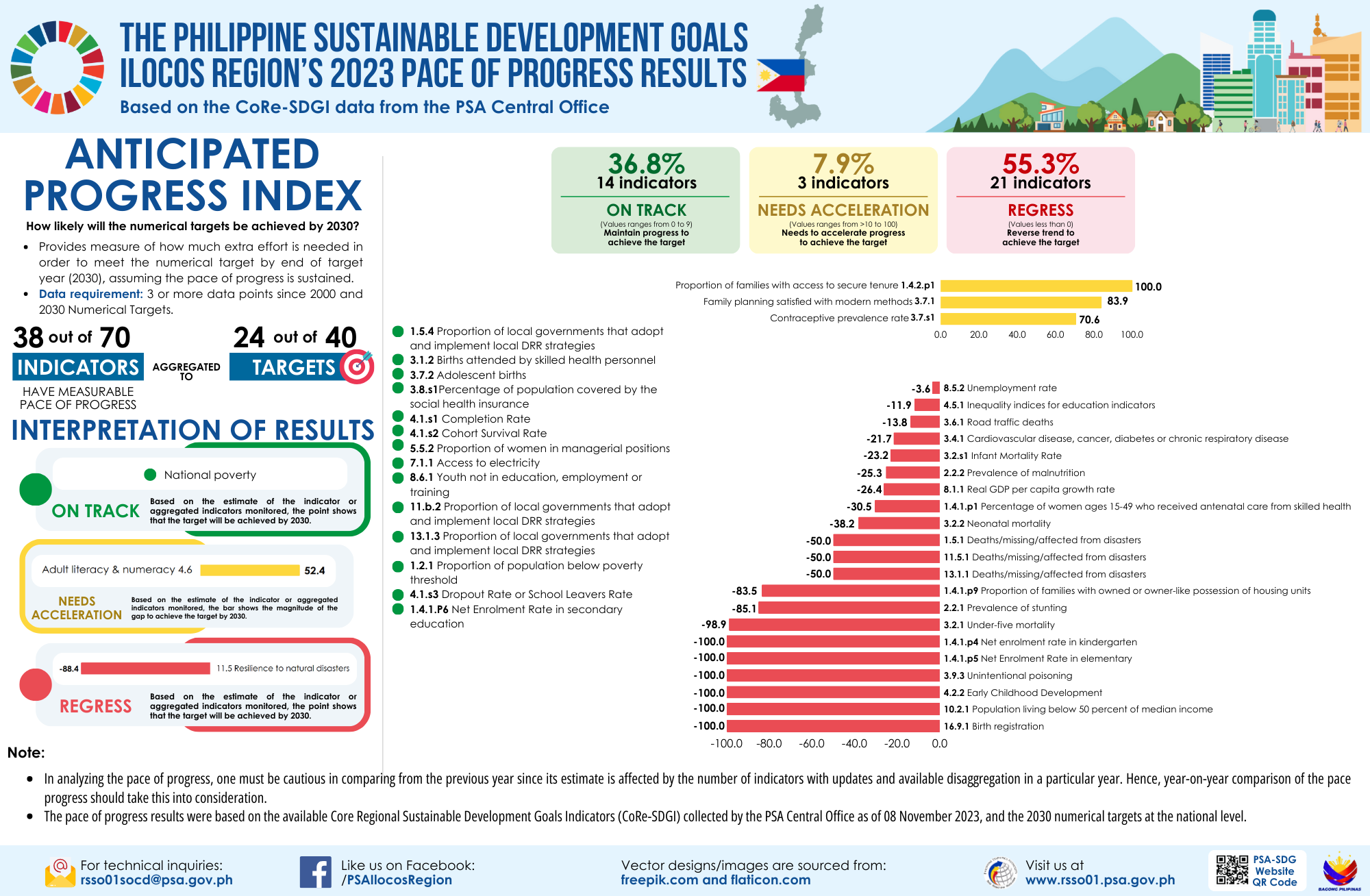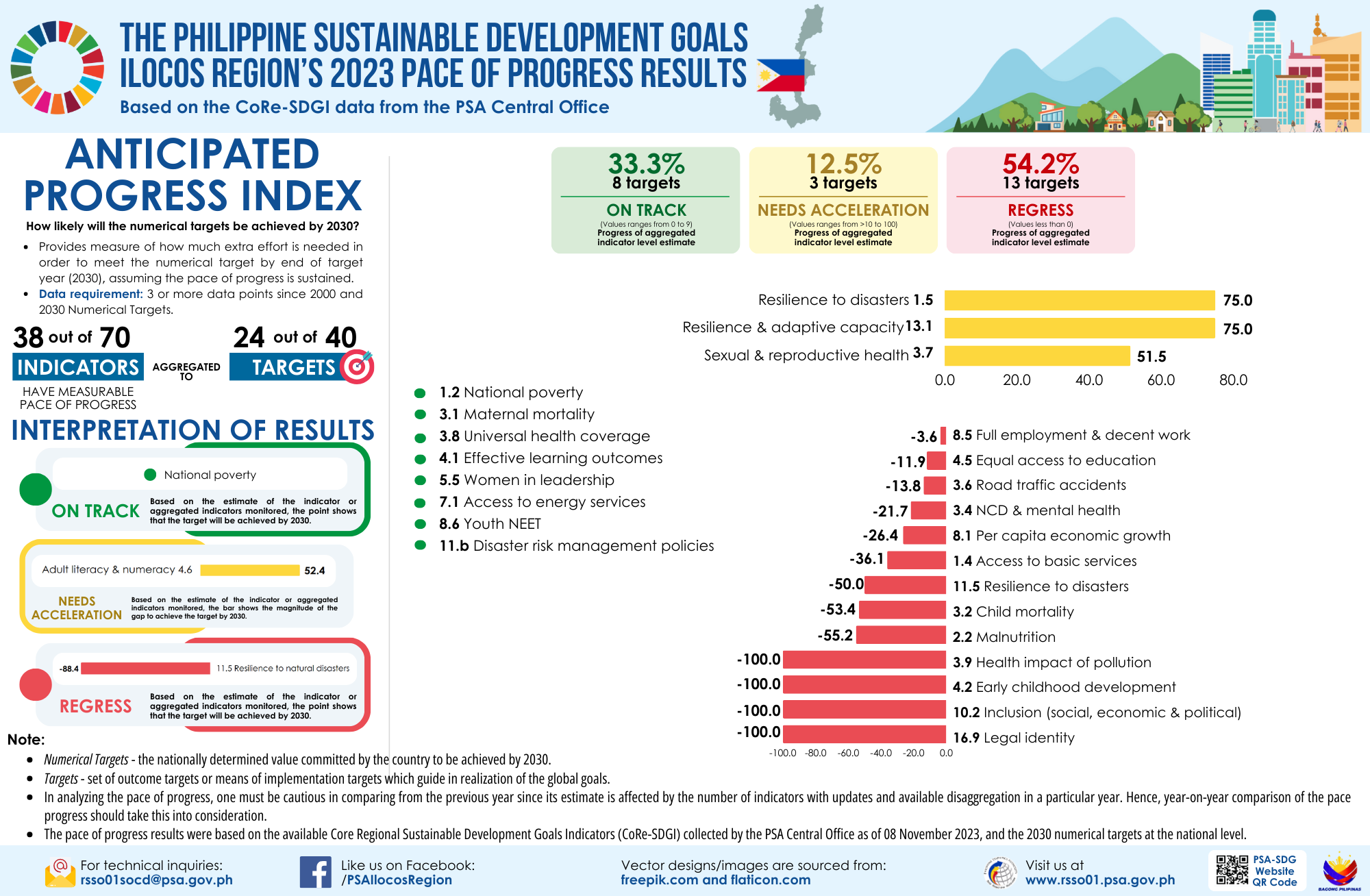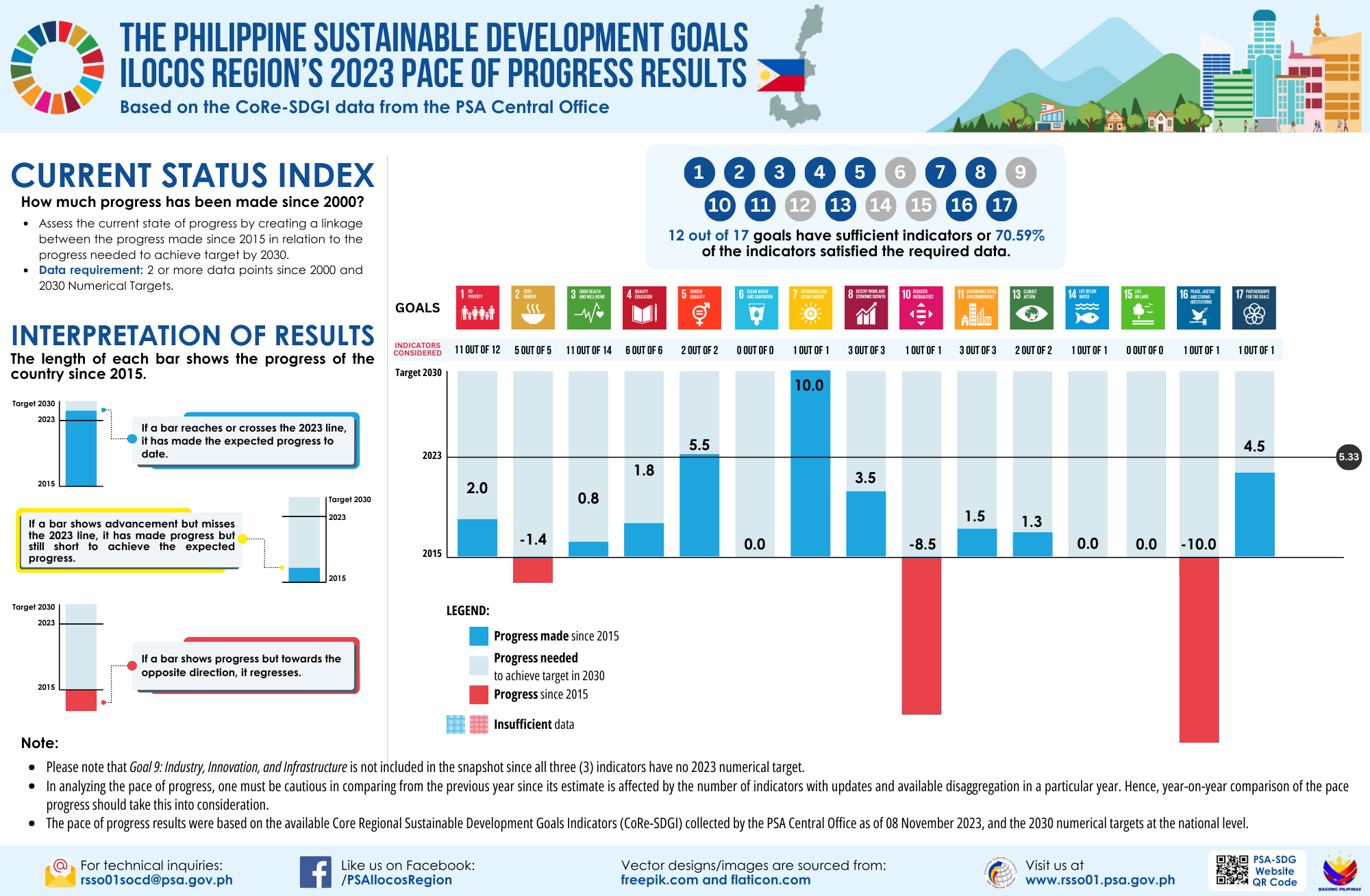Current Status Index – How much progress has been made since 2015?
Fourteen out of the seventeen goals in the Ilocos Region have estimates for the Current Status Index (Figure 1). There were four goals (SDG 1, 7, 9, and 16) that reached or crossed the 2021 line, which means that the region has made the expected progress to date. Moreover, seven goals (SDG 3, 4, 5, 8, 11, 15, and 17) are behind but towards the 2021 line. Only SDG Goal 10: Reduced Inequalities needed progress to achieve that target in 2030. Furthermore, there were two goals (SDG 2 and 6) that regressed since 2015 to which a reverse trend is needed to achieve the 2030 target.
Anticipated Progress Index – How likely will the numerical target be achieved by 2030?
All 34 targets monitored in the Ilocos Region satisfied the data requirements, hence, have the pace of progress based on the Anticipated Progress Index (Table 1). As shown in Figure 2, among the 34 targets, eight targets are on track or need to maintain progress to achieve the target. However, 13 or 38.2 percent of the targets need acceleration while another 13 or 38.2 percent are regressing or need to reverse the trend to achieve the target.
At the indicator level, there are 82 out of 87 indicators in Ilocos Region that have pace of progress (Table 2). Among the 82 indicators, 30 indicators are on track (Figure 3), 19 indicators (23.2 percent) need acceleration (Figure 4), and 33 indicators (40.2 percent) are regressing (Figure 5).
Figure 3. Progress Gap – Indicators on Track

Figure 4. Progress Gap – Indicators that Need Acceleration
There is a need to accelerate the current rate of progress to achieve the target. In Figure 4, the bar shows the magnitude of the gap between the predicted and target values of indicators that are not expected to hit the target by 2030. Moreover, Figure 5 shows the magnitude of the gap between the predicted and target values of indicators that are not expected to hit the target by 2030. The trend needs to be reversed to achieve the target.
Figure 5. Progress Gap – Indicators that are Regressing





